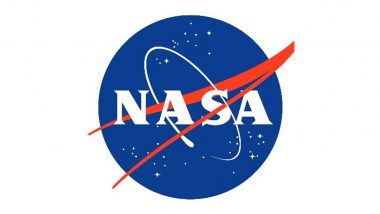While much of the online buzz this week concerns several large asteroids making distant flybys past Earth, the genuine concern should be the smaller, sneakier asteroids that come dangerously close to our planet. Asteroid 2024 MH1 is set to make a notable close approach to Earth on July 26. Today, this intriguing near-Earth object (NEO) will make its closest approach to our planet in a decade. However, according to NASA, the asteroid will not pose any threat to Earth. In this article, we’ll delve into the size, dimension, distance from Earth and other details about Asteroid 2024 MH1. Asteroid 2011 MW1, Asteroid 2024 NV1, Asteroid 2024 MH1, Asteroid 2011 AM24 and Asteroid 2024 NZ1: Know Next Five Asteroid Approaches, Dates and Sizes.
Distance From Earth
According to NASA, it will come within 0.012007 Astronomical Units, or approximately 1,796,166 kilometres, of Earth. This distance is about 4.7 times the average distance between the Earth and the Moon, placing it well within our world's orbit. Despite this relatively close proximity, 2024 MH1 does not pose any immediate threat to Earth.
Asteroid 2024 MH1 Dimension
Estimated to be around 91 feet (28 metres) in diameter, 2024 MH1 is roughly the size of an airplane. While large from a human perspective, it is relatively modest in the grand scale of celestial objects. If an asteroid of this size were to collide with Earth, it would not cause global devastation. However, it could still inflict significant local damage, depending on factors like its speed, angle of entry, and impact location.
Asteroid 2024 MH1 Composition
The exact composition of 2024 MH1 is not fully known. However, many asteroids of similar size are composed of rock and metal, offering insights into the building blocks of our solar system.
Asteroid 2024 MH1 Magnitude and Viewing Tips
With a current visual magnitude of 21.95, 2024 MH1 is quite dim and nearly impossible to observe with standard telescopes. Only specialised equipment and long-exposure astrophotography techniques will allow astronomers to capture images of this asteroid. Its low brightness highlights the importance of advanced observational techniques in tracking NEOs.
Asteroid 2024 MH1 Monitoring
Monitoring 2024 MH1 is part of a broader effort to track near-Earth objects. Organisations like NASA’s Jet Propulsion Laboratory (JPL) and various astronomical observatories continuously observe these objects to gather data on their orbits, sizes, and compositions. This information is crucial for preparing for potential future encounters with larger asteroids.
Interestingly, two of the five asteroids have already approached Earth on July 25, while the other three, Asteroid 2011 AM24 and Asteroid 2024 NZ1, some as big as a building or a stadium, are also set to zoom past Earth this week. However, they will do so from a distance of at least 3.9 million kilometres or more, with none coming as close as 2024 MH1.
As we marvel at the night sky and the diligent work of scientists, we gain a deeper appreciation for the intricate dance of celestial bodies. Whether it's observing the dim, fleeting presence of 2024 MH1 or understanding the significance of other large asteroids passing by at safer distances, these events underscore our place in the universe and the importance of advancing our knowledge and technology to keep our planet safe.
(The above story first appeared on LatestLY on Jul 26, 2024 10:47 AM IST. For more news and updates on politics, world, sports, entertainment and lifestyle, log on to our website latestly.com).













 Quickly
Quickly





















